BRAF activation by metabolic stress promotes glycolysis sensitizing NRASQ61-mutated melanomas to targeted therapy
- PMID: 36402789
- PMCID: PMC9675737
- DOI: 10.1038/s41467-022-34907-0
BRAF activation by metabolic stress promotes glycolysis sensitizing NRASQ61-mutated melanomas to targeted therapy
Abstract
NRAS-mutated melanoma lacks a specific line of treatment. Metabolic reprogramming is considered a novel target to control cancer; however, NRAS-oncogene contribution to this cancer hallmark is mostly unknown. Here, we show that NRASQ61-mutated melanomas specific metabolic settings mediate cell sensitivity to sorafenib upon metabolic stress. Mechanistically, these cells are dependent on glucose metabolism, in which glucose deprivation promotes a switch from CRAF to BRAF signaling. This scenario contributes to cell survival and sustains glucose metabolism through BRAF-mediated phosphorylation of 6-phosphofructo-2-kinase/fructose-2,6-bisphosphatase-2/3 (PFKFB2/PFKFB3). In turn, this favors the allosteric activation of phosphofructokinase-1 (PFK1), generating a feedback loop that couples glycolytic flux and the RAS signaling pathway. An in vivo treatment of NRASQ61 mutant melanomas, including patient-derived xenografts, with 2-deoxy-D-glucose (2-DG) and sorafenib effectively inhibits tumor growth. Thus, we provide evidence for NRAS-oncogene contributions to metabolic rewiring and a proof-of-principle for the treatment of NRASQ61-mutated melanoma combining metabolic stress (glycolysis inhibitors) and previously approved drugs, such as sorafenib.
© 2022. The Author(s).
Conflict of interest statement
The authors declare no competing interests.
Figures
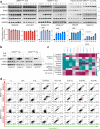
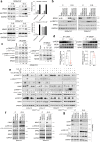
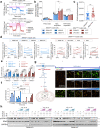

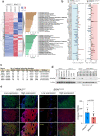
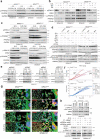
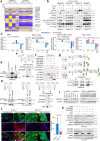
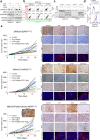
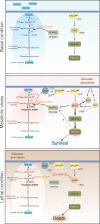
Similar articles
-
RSK Regulates PFK-2 Activity to Promote Metabolic Rewiring in Melanoma.Cancer Res. 2018 May 1;78(9):2191-2204. doi: 10.1158/0008-5472.CAN-17-2215. Epub 2018 Feb 12. Cancer Res. 2018. PMID: 29440170
-
Growth suppression by dual BRAF(V600E) and NRAS(Q61) oncogene expression is mediated by SPRY4 in melanoma.Oncogene. 2019 May;38(18):3504-3520. doi: 10.1038/s41388-018-0632-2. Epub 2019 Jan 16. Oncogene. 2019. PMID: 30651601 Free PMC article.
-
MEK inhibition may increase survival of NRAS-mutated melanoma patients treated with checkpoint blockade: Results of a retrospective multicentre analysis of 364 patients.Eur J Cancer. 2018 Jul;98:10-16. doi: 10.1016/j.ejca.2018.04.010. Epub 2018 May 26. Eur J Cancer. 2018. PMID: 29843107
-
Novel mechanisms and therapeutic approaches in melanoma: targeting the MAPK pathway.Discov Med. 2015 Jun;19(107):455-61. Discov Med. 2015. PMID: 26175403 Review.
-
The role of MEK inhibitors in the treatment of metastatic melanoma.Curr Opin Oncol. 2014 Mar;26(2):196-203. doi: 10.1097/CCO.0000000000000050. Curr Opin Oncol. 2014. PMID: 24419498 Review.
Cited by
-
Exploiting Paradoxical Activation of Oncogenic MAPK Signaling by Targeting Mitochondria to Sensitize NRAS Mutant-Melanoma to Vemurafenib.Int J Mol Sci. 2025 Mar 16;26(6):2675. doi: 10.3390/ijms26062675. Int J Mol Sci. 2025. PMID: 40141318 Free PMC article.
-
Therapeutic implications of the metabolic changes associated with BRAF inhibition in melanoma.Cancer Treat Rev. 2024 Sep;129:102795. doi: 10.1016/j.ctrv.2024.102795. Epub 2024 Jun 28. Cancer Treat Rev. 2024. PMID: 38972133 Free PMC article. Review.
-
Transcriptional reprogramming triggered by neonatal UV radiation or Lkb1 loss prevents BRAFV600E-induced growth arrest in melanocytes.Oncogene. 2025 Jun;44(21):1592-1608. doi: 10.1038/s41388-025-03339-7. Epub 2025 Mar 8. Oncogene. 2025. PMID: 40057604 Free PMC article.
-
Metabolic Reprogramming in Melanoma: An Epigenetic Point of View.Pharmaceuticals (Basel). 2025 Jun 6;18(6):853. doi: 10.3390/ph18060853. Pharmaceuticals (Basel). 2025. PMID: 40573249 Free PMC article. Review.
-
Metabolic reprogramming in melanoma therapy.Cell Death Discov. 2025 Jul 5;11(1):308. doi: 10.1038/s41420-025-02617-3. Cell Death Discov. 2025. PMID: 40617808 Free PMC article. Review.
References
Publication types
MeSH terms
Substances
LinkOut - more resources
Full Text Sources
Medical
Molecular Biology Databases
Research Materials
Miscellaneous

